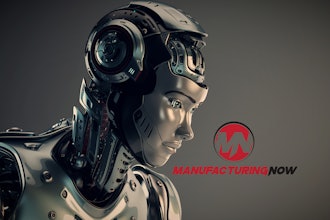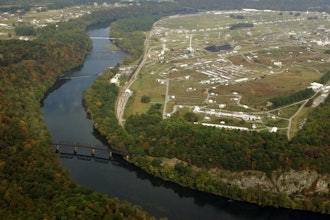
 Srivats Ramaswami
Srivats RamaswamiOver the past five years, Industrial Internet of Things (IIoT) technology has advanced more rapidly than we ever imagined. From a manufacturing and supply chain perspective, technology is no longer a barrier. It’s more about selecting the problems that you want to address and choosing the right technology to solve them. Remarkable results are being achieved by applying IIoT technology in high-tech, highly regulated manufacturing environments including medical, automotive and aerospace. The convergence of IIoT with advanced analytics, big data capabilities, and emerging technologies like augmented reality has opened a world of innovation, automation, and optimization possibilities for manufacturers.
From machine sensors that maximize factory equipment uptime by prescriptively indicating just-in-time maintenance and repairs, to robotic assembly cells that perform microscopic assembly operations more accurately than humans, the need to digitally transform the manufacturing enterprise is changing business processes, production operations, maintenance and repair services. Even the relationship between producers and consumers is changing as manufacturers build in more service components using IoT technology.
Most importantly, with IIoT-based systems, manufacturers can achieve new levels of interoperability, visibility, control, and responsiveness by integrating shop floor components with each other and with cloud-based management systems — all of which brings the business and production operations into closer alignment. In an era when global competitive pressure squeezes timelines and budgets, extracting maximum efficiency and performance from every part of the value chain is critical. When machines and sensors are cloud-connected, the resulting intelligence enables factory managers to understand where and how their very best assets are out-performing expectations and which assets should be a focus for improvement.
Real-Time Global Supply Visibility Across Multiple Factories
When it comes to the role of a chief procurement officer (CPO), he or she is responsible for keeping multiple factories around the world supplied with high technology components and subassemblies. We are currently in an environment of tight supplies for a number of critical electronic components, such as multilayer ceramic capacitors (MLCC’s). Supply chain managers need a system that gives them real-time visibility and alerts associated with emerging delivery and supply chain issues. This type of visibility is achievable with the latest generation of cloud supply chain software.
Using their laptop, supply chain executives on the road can quickly check status of work in progress (WIP) or finished goods inventory (FGI) levels of key components or assemblies at their feeder factories, and even third party suppliers using this cloud based supply chain software. Because most factory and test equipment is connected to the cloud, they have real-time access to critical WIP information. For example, if a key shipment of 100 subassemblies is due next week at one of their final assembly factories, a supply chain manager can log into the feeder factory that is to ship these critical subassemblies to check production status. If that supply chain manager sees 200 assemblies at final test, they can have high confidence that the 100 subassemblies due will be shipped on time. The same system can be programmed to provide real-time alerts to supply chain staff and executive management when important FGI levels trend outside of preset limits.
Real-Time Data Analytics for Medical Device Manufacturing
Another scenario where we see real-time data analytics coming into mainstream use is in the manufacturing of very high volume, complex products. In one case, a customer came to us with a medical device that included a sensor that had out-of-the-box accuracy of +/- 10 percent, but needed the sensor calibrated to reach an accuracy of +/-5 percent to be competitive in the marketplace. This product is made in high volume, with one device being built every second. Without automated analytics and calibration, this type of product could not be manufactured at a reasonable price point.
The method we devised was the device sensor could be calibrated by taking five real- time measurements during production, using calibration equations and coming up with correction factors that were then loaded into the medical device’s memory. All of this was accomplished at the rate of one device built per second. This approach enabled the customer to differentiate themselves in the marketplace in ways that would not have been possible without real-time analytics and calibration.
There’s nothing simple about managing modern factories and supply chains. The repercussions of geopolitics, trade negotiations, regulatory changes, rising energy costs, and resource scarcity complicate matters even further. Real-time management and remediation capabilities are essential to keeping everything running when there are so many external variables, third parties, physical locations, and inherent product complexities in the mix.
This is especially true in highly regulated industries like medical, aerospace, and automotive, where tolerance for defects is near zero and every component and process along the way must be monitored, inspected, traced, and documented. Access to performance and production status at the product, workstation, production floor, plant, regional and global levels is an imperative.
Manufacturing leaders don’t have the time or resources to waste on long, complicated solutions deployments. Requirements and product lines change rapidly; engineering changes are a fact of life, even in high volume production. Keeping up with the impact of emerging technology on consumers, clients, suppliers, and everything in between is a constant challenge. Solutions that bring IIoT, analytics and cloud technologies together in easily deployed, flexible platforms are now available, and providing real business value.
Srivats Ramaswami is CTO at 42Q.






















